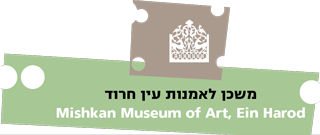Eretz-Israeli and Israeli Art
Curators: Suria Sadekova, Batsheva Goldman-Ida, PhD, Yaniv Shapira
Eretz-Israeli and Israeli Art
Artists: Pinchas Abramovitch, Shai Azoulay, Yosl Bergner, Amit Cabessa, Moshe Castel, Yosef-Joseph-Yaakov Dadoune,
Yitzhak Frenkel, Aram Gershuni, Moshe Gershuni, Tamar Getter, Tsibi Geva, Tama Goren, Michael Gross, Ardyn Halter, Ruthi Helbitz Cohen, David Hendler, Jonathan Hirschfeld, Haran Kislev, Marik Lechner, Mordechai Levanon, Idit Levavi-Gabbai, Uri Lifschitz, Moshe Mokady, Michal Naaman,
Amir Nave, Lea Nikel, Avraham Ofek, Assaf Rahat, Jan Rauchwerger,
Ori Reisman, Michael Sgan-Cohen, Michal Shamir, Menachem Shemi,
Sima Slonim, Avigdor Stematsky, Yehezkel Streichman, Ran Tenenbaum,
Igael Tumarkin, Aviva Uri, Yossef Zaritsky, Pinchas Zinovich
This chapter of the exhibition is dedicated to Eretz-Israeli and Israeli artists who were inspired by Chaïm Soutine or show affinities to his work. Some of the 1930s artists—e.g. Sima Slonim, Yitzhak Frenkel, Moshe Castel, and Moshe Mokady—found in Soutine a quality which enabled them to break free from the Eretz-Israeli Fauvism and refine a more personal expression. Avigdor Stematsky, Yehezkel Streichman, and Yossef Zaitsky, who later founded New Horizons and formulated Lyrical Abstraction, painted in a somber figurative style in those years, as per the impact of the École de Paris. In the 1950s, Soutine’s influence was manifested in the work of such artists as Michael Gross, Lea Nikel, and Ori Reisman, who, following in his footsteps, depicted a slaughtered chicken. In the 1960s, Mordechai Levanon relied on Soutine’s Cagnes-sur-Mer landscapes to formulate his mature style, and in the late 1970s and early 1980s, Igael Tumarkin, Aviva Uri, and Moseh Gershuni drew on his work, when they deviated from minimalist and conceptual art formulae, opting for a more powerful expression. Soutine’s impact is also evident in the work of a younger generation of artists—Amir Nave, Marik Lechner, Amit Cabessa, and others—who adopt images and technique from his oeuvre, regarding it as a direct expression of their inner self.








